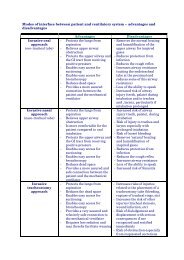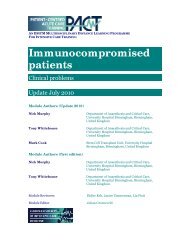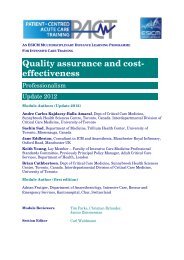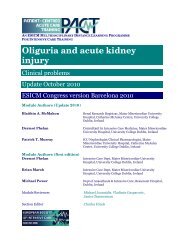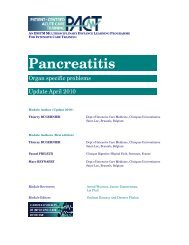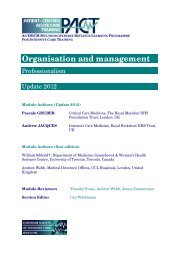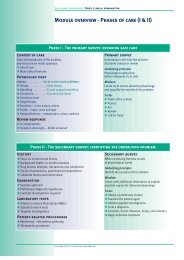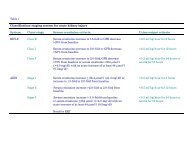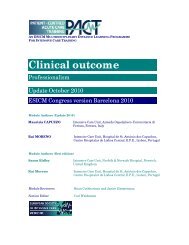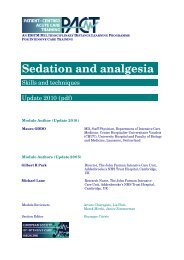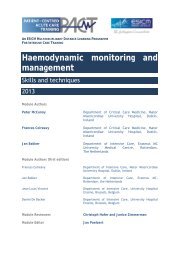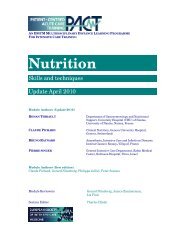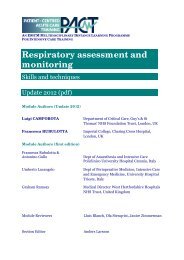Burns injury - PACT - ESICM
Burns injury - PACT - ESICM
Burns injury - PACT - ESICM
Create successful ePaper yourself
Turn your PDF publications into a flip-book with our unique Google optimized e-Paper software.
Altered mental state<br />
Loss of consciousness<br />
Focal neurological deficits<br />
Seizures<br />
Pregnancy with COHb levels >15%<br />
While hyperbaric oxygen treatment was considered a standard after an early<br />
(prematurely interrupted) trial, more recent evidence has caused enthusiasm to<br />
fade. In 2011, the debate continued (see references below) as repeated hyperbaric<br />
treatment had the potential to worsen outcome in comatose patients.<br />
Oxygen (100%) administration remains the primary treatment.<br />
Outcome<br />
Survivors of severe CO poisoning are at risk of delayed neurological sequelae.<br />
About 40 % patients develop mild to severe symptoms 3 to 240 days after apparent<br />
recovery.<br />
Weaver LK, Hopkins RO, Chan KJ, Churchill S, Elliott CG, Clemmer TP, et al.<br />
Hyperbaric oxygen for acute carbon monoxide poisoning. New Engl J<br />
Med 2002; 347(14): 1057–1067. PMID 12362006<br />
Annane D, Chadda K, Gajdos P, Jars-Guincestre MC, Chevret S, Raphael JC.<br />
Hyperbaric oxygen therapy for acute domestic carbon monoxide<br />
poisoning: two randomized controlled trials. Intensive Care Med 2011;<br />
37(3): 486–492. PMID 21125215<br />
Buckley NA, Juurlink DN, Isbister G, Bennett MH, Lavonas EJ. Hyperbaric oxygen<br />
for carbon monoxide poisoning. Cochrane Database Syst Rev 2011; (4):<br />
CD002041. PMID 21491385<br />
Cyanide poisoning<br />
Cyanide (CN) poisoning is still an often-overlooked diagnosis in fire victims,<br />
particularly in closed space burns. Clinical features are dose-dependent, starting<br />
with anxiety, progressing to dyspnoea, seizures, coma and cardiorespiratory arrest.<br />
Diagnosis<br />
CN poisoning presents a diagnostic dilemma for first-response emergency personnel.<br />
While clinicians are often able to diagnose CO poisoning by either arterial- or venous<br />
blood sampling to measure COHb or by oximetry (with reasonable accuracy), CN<br />
poisoning is less clear cut. Baud et al. found that the concentration of lactate<br />
increases proportionally with the amount of CN poisoning because of the related<br />
metabolic acidosis. An early arterial lactate level >5 mmol/L should raise suspicion.<br />
22



